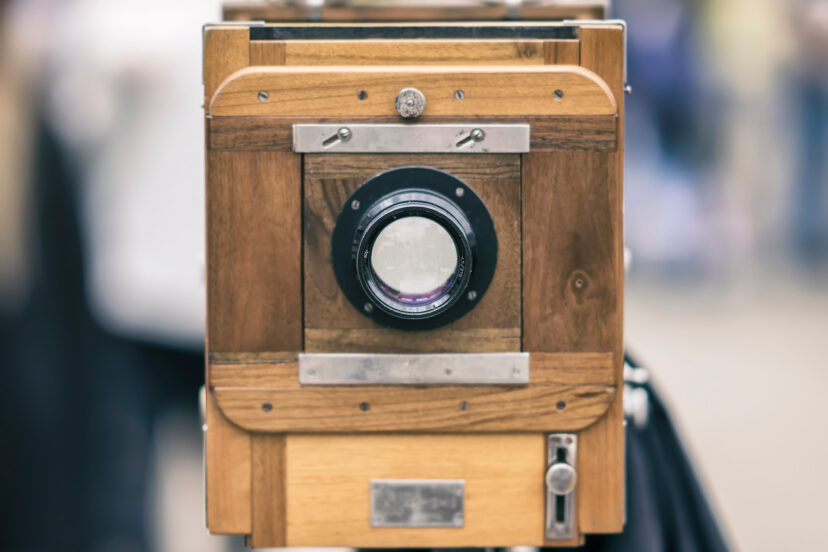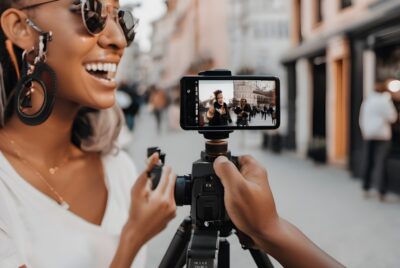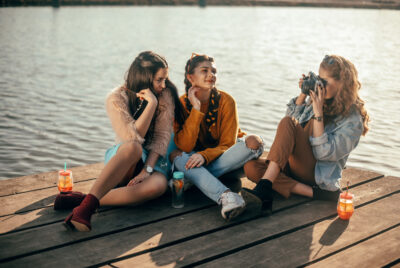When Was Photography Invented? A Journey Through Time
Ever wondered when was photography invented? If you’re like me—a bit of a photography nerd—you’ve probably stared through your viewfinder and thought, “How did we get here?” From ancient optical experiments to today’s AI-driven smartphone cameras, the evolution of photography is a wild ride. So let’s jump in and take a walk through time, camera in hand.
Why Understanding Photography’s Origins Matters
Connecting the Past to the Present
Photography isn’t just a modern convenience; it’s a rich, evolving art form. Knowing where it all started helps you appreciate your gear—and your skill—even more.
Appreciating How Far We’ve Come
When you consider that people used to sit still for several minutes just to get a single portrait, it makes today’s high-speed burst modes seem like science fiction.
Before the Camera: Ancient Optical Experiments
The Camera Obscura
Believe it or not, the roots of photography go way back—before film, before glass plates, before even chemistry. The Camera Obscura (Latin for “dark chamber”) was described as early as the 5th century BCE. It was essentially a pinhole box that projected an inverted image of the outside world onto a surface inside. No photos yet, but it laid the optical groundwork.
Mozi and Aristotle’s Observations
Philosophers like Mozi (China) and Aristotle (Greece) observed the natural projection of light through small holes, realizing it could reproduce an image. They didn’t have film, but they had the idea, and that counts for a lot.
The Birth of Photography: 19th Century Milestones
1826: The First Permanent Photograph by Nicéphore Niépce
Photography, as we know it, officially began in 1826 when French inventor Nicéphore Niépce created the first permanent photograph using a process called heliography. The exposure took eight hours—imagine telling a couple on their wedding day, “Just hold that smile for the rest of the afternoon!”
Daguerreotype: Louis Daguerre’s Breakthrough in 1839
Niépce’s work caught the attention of Louis Daguerre, who perfected the process in 1839 with the daguerreotype. It cut exposure times significantly and produced crisp, detailed images on a silver-plated sheet. That year is often celebrated as the official birth of photography.
Talbot and the Calotype
Meanwhile in England, William Henry Fox Talbot developed the calotype, which introduced the concept of negatives—a game-changer because it meant you could make multiple prints from one photo. Revolutionary stuff!
The Rise of Popular Photography
The Kodak Revolution in 1888
Fast-forward to 1888, when George Eastman introduced the Kodak camera. It came preloaded with film for 100 photos and their slogan was “You press the button, we do the rest.” Talk about making photography user-friendly!
Photography Becomes Accessible to the Public
Suddenly, photography wasn’t just for scientists and artists—it was for everyone. Families, travelers, and even kids could capture their world in pictures.
From Film to Digital: The Photography Evolution
20th Century Film Photography
For much of the 20th century, photography evolved through various film formats—from 35mm rolls to Polaroid instant prints. Shooting film taught photographers patience and precision—there was no “delete” button.
The Digital Photography Boom
First Digital Sensors
In the late 1960s, digital sensors were born. The first true digital cameras came in the 1990s, but they were bulky and expensive.
Rise of DSLR Cameras
By the early 2000s, DSLRs (Digital Single Lens Reflex cameras) started replacing film cameras in both professional and hobbyist circles. No film, no developing—just instant previews and endless creativity.
>>> Today’s deals for cameras on Amazon CLICK HERE <<<
The Impact of Photography on Society
Journalism and Truth-Telling
From the Civil War to 9/11, photographs have brought truth to the masses. They’ve held people accountable and preserved moments too powerful for words.
Personal Memories and Storytelling
Photos are how we remember birthdays, vacations, and the faces of people we love. They’re tiny time machines we carry in our pockets.
Photography Today and the Smartphone Era
Instant Sharing and Social Media Influence
With a phone in every hand, photography today is about instant moments. Instagram, TikTok, and even memes are fueled by the power of visual storytelling.
Everyone’s a Photographer Now
Sure, not everyone’s a professional, but with the quality of today’s smartphone cameras, anyone can take a stunning photo. And honestly? That’s kind of beautiful.
Why Learning Photography History Helps Your Craft
Techniques That Still Apply Today
Even with all our tech, some old-school techniques—like composition, lighting, and storytelling—still make or break a shot.
Inspiration From the Pioneers
Studying the work of early photographers like Dorothea Lange or Ansel Adams can ignite new ideas in your own work. They didn’t have Photoshop, but they had vision—and that’s timeless.
Conclusion
So, when was photography invented? Technically in 1826, but the path to get there started centuries earlier. And since then, photography has grown from chemical experiments to a universal language spoken by billions. Whether you shoot with a DSLR, your phone, or an old film camera, knowing where it all began connects you to a deeper, richer story. And that story? It’s still unfolding—one click at a time.
>>> Today’s deals for cameras on Amazon CLICK HERE <<<
FAQs
1. Who is considered the inventor of photography?
Nicéphore Niépce is credited with taking the first permanent photograph in 1826, making him the inventor of photography.
2. What was the first photo of?
The first photo captured a view from Niépce’s window in France. It’s a grainy black-and-white image called “View from the Window at Le Gras.”
3. When did photography become mainstream?
Photography became mainstream in 1888 when Kodak released its easy-to-use camera to the general public.
4. What replaced film photography?
Digital photography replaced film photography in the late 1990s and early 2000s due to its convenience and instant image previews.
5. Why is photography history important for beginners?
Understanding the origins of photography helps beginners appreciate the craft, learn timeless techniques, and find inspiration from early pioneers.
Further reading on when was photography invented
Here are two authoritative resources that delve into the history and evolution of photography, complementing the insights shared in the article:
-
National Science and Media Museum – History of Photography
This comprehensive resource explores the development of photography from its inception to the modern era. It highlights key figures like William Henry Fox Talbot and examines early photographic processes, providing a thorough understanding of the medium’s evolution.
-
Khan Academy – Early Photography: Niépce, Talbot, and Muybridge
This educational article offers an in-depth look at the pioneers of photography, including Joseph Nicéphore Niépce and William Henry Fox Talbot. It discusses their contributions to the field and the technological advancements that shaped early photographic practices.
These resources provide valuable insights into the origins and progression of photography, enriching your understanding of the subject.
Further reading
Check out our other relevant articles:
Here are two authoritative resources that delve into the history and evolution of photography, complementing the insights shared in the article:
-
National Science and Media Museum – History of Photography
This comprehensive resource explores the development of photography from its inception to the modern era. It highlights key figures like William Henry Fox Talbot and examines early photographic processes, providing a thorough understanding of the medium’s evolution.
-
Khan Academy – Early Photography: Niépce, Talbot, and Muybridge
This educational article offers an in-depth look at the pioneers of photography, including Joseph Nicéphore Niépce and William Henry Fox Talbot. It discusses their contributions to the field and the technological advancements that shaped early photographic practices.
These resources provide valuable insights into the origins and progression of photography, enriching your understanding of the subject.





Comments are closed.